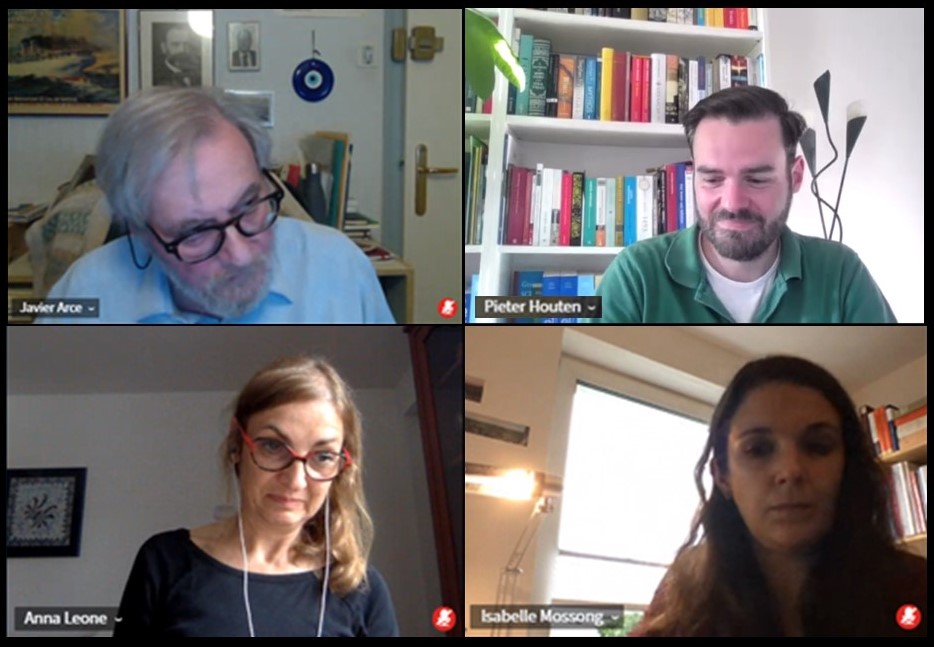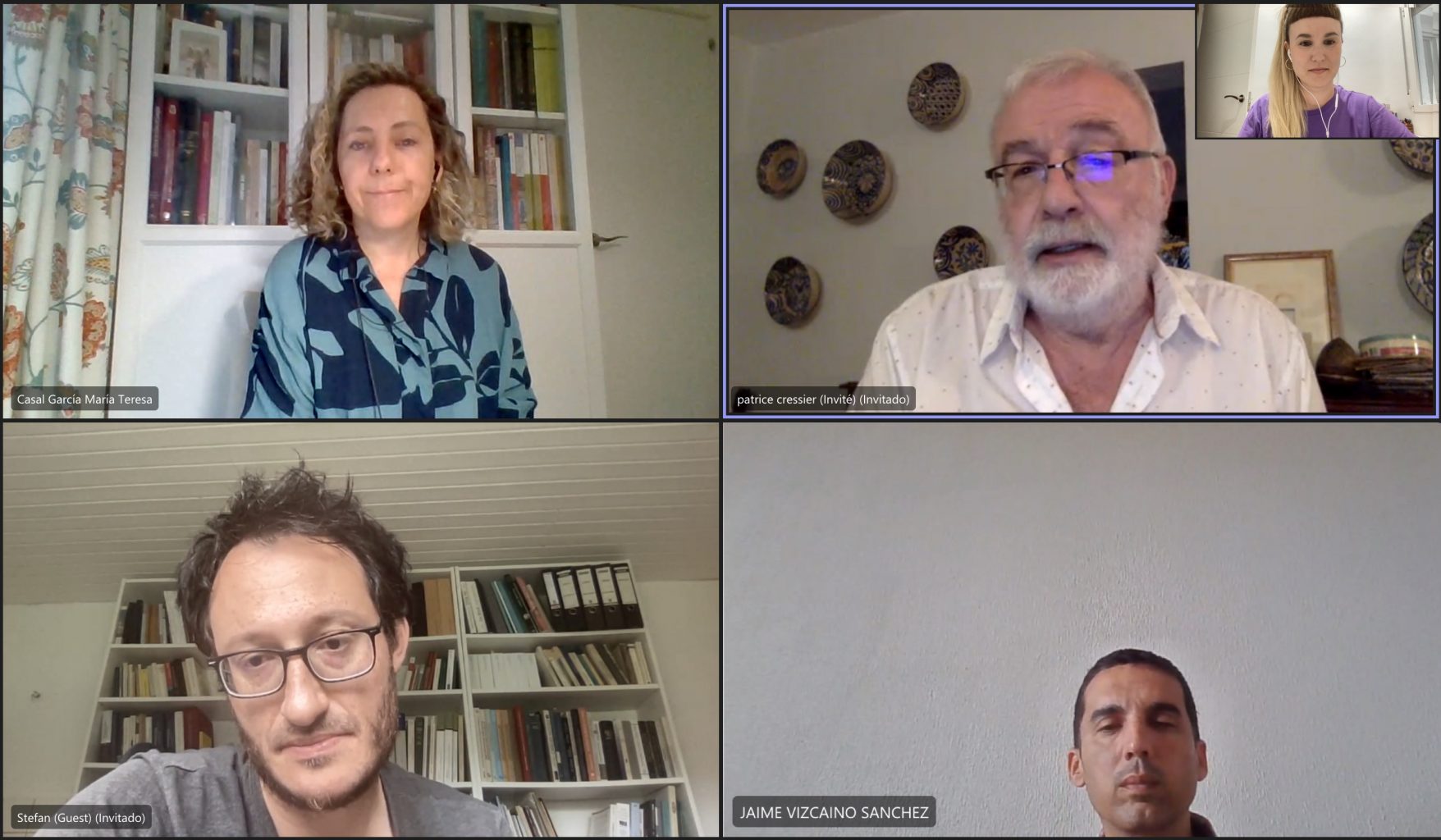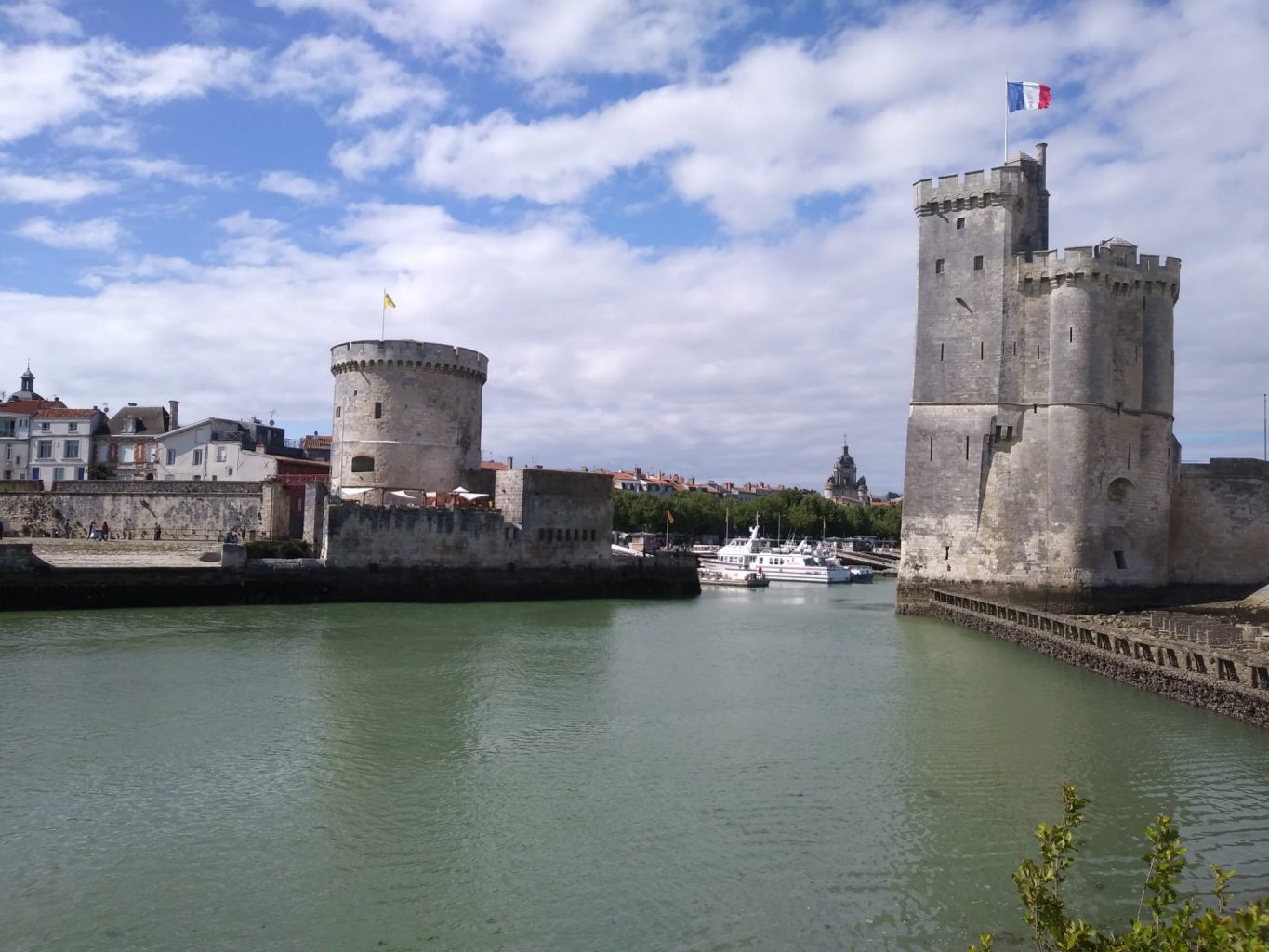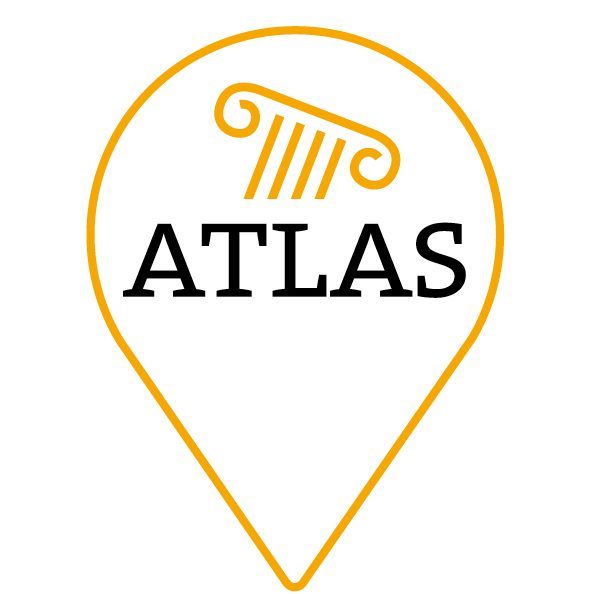Next autumn on the 9th and 10th of November we will have our third and next ATLAS meeting in La Rochelle. With only half a year left the research groups have started thinking about the topic and preparing the research for the group presentations. We hope to have a similarly fruitful meeting as we had in Madrid and Hamburg. The Madrid meeting was the official launch of the project. This is where we got acquainted and formed the research groups. The second meeting, the one in Hamburg, was the first time that these groups presented their work to the other members of the project, generating a rich debate that encouraged us to continue analysing urban planning in Late Antiquity from different and complementary perspectives (here you can read a detailed report on it).
Digital meetings continue
For our research groups to present novel research and ideas they need to have group meetings and discuss their work. As our project has members from a multitude of countries, most coming from France, Germany, Spain and Tunis, we cannot meet in real life for each group meeting. Therefore groups meet digitally. Something we all have become much better in over the past two years. In the past few weeks some groups have already met and decided their research approach. Other groups are meeting this month for the first time since January. We all notice that the slow opening up of society has led to a high concentration of research activities. Invitations to participate in conferences, workshops and courses, as well as new archaeological excavations can finally take place. Added to this we find ourselves invited to join new conferences and excavations have progressively filled up our agendas. Nonetheless, the fact that we meet digitally makes it easier to find a gap for the meetings between (or even during) our multiple obligations.
Planning research for the upcoming months
Various groups that have met earlier this year have made quite some detailed research plans. The epigraphy group first met in March and planned to study the building inscriptions.These are inscriptions that commemorate the construction, or restoration, of a building and often mention the benefactor. In the ancient world it was common for the elite to pay (partially) for the construction and upkeep of public buildings, this was called euergetism. Traditionally it is accepted that this habit died out in Late Antiquity as the role and wealth of the urban elite diminished. However, the pattern might change if we consider the bishops and their church dedications from the case study cities of the project. In order to do this the group has planned to collect all building inscriptions before June 8th. On this day they meet again to discuss the inscriptions and see if all have been collected and recorded correctly. If this is the case each member will have all summer to start thinking about the interpretation of the patterns. They meet again in September to exchange ideas and start preparing the presentation. In October they plan to have the presentation ready for the meeting in La Rochelle.

Two other groups also met in March to begin to define the lines of work for the coming months: the Eighth Century group and the group on the Shape of Urban Spaces. The group Eighth Century, dedicated to the study of the last century covered by ATLAS, has decided to carry out a specific analysis of each of the project’s case studies. Given the disparity and scarcity of the material and textual record, as was shown in the presentation at Hamburg, on this occasion the group intends to bring together all the available data on the 8th century for each of the cities. The aim is to present an updated state of the art that takes into account not only the archaeological record but also the textual and epigraphic sources, in order to answer questions such as: what archaeological indicators can we find to visualise the 8th century in the cities chosen for the project; what administrative category did they have before and after the Islamic conquest; how are these cities defined in the written sources (medina, alquería, etc.); or what happens to the place names of these cities, are they maintained, change or disappear? During its last meeting in mid-May, the group agreed on the distribution of the case studies according to the lines of research and knowledge of each of the members. The aim is to have this data collected by July, when another meeting is planned to share the work done and to start defining the points of interest for the November meeting. The group expects to meet again in September to finalise the presentation of La Rochelle.
The Shape of Urban Spaces group, on the other hand, began by brainstorming on possible themes to develop. As this is a group with a wide range of themes and a large number of members, it is not always easy to decide on a specific research question. Thus, at the March meeting it was decided to analyse to greater depth some of the themes that had already been treated in their presentation at the last meeting in Hamburg (fortifications, polynuclear urbanism, suburbia, housing, funerary spaces, etc.). After a vote, it became clear that there are two topics that are of most interest to the members of the group: polynuclear urban planning and housing. At its last meeting, the group considered the possibility of analysing both issues, paying particular attention to the urban organisation of cities, often with dispersed and apparently unconnected nuclei of occupation (the so-called città ad isole), and to the location of housing within this very particular urbanism. The group also wants to examine the evolution of these domestic spaces during Late Antiquity, their morphological and constructive aspects, in order to carry out a diachronic and comparative analysis between the case studies of southern Hispania and North Africa.

The territory group convened on May 24th in the afternoon to start their brainstorm session. But before this could start two new members had to be welcomed to the group: Fred Hirt and Christoph Eger. After a short discussion on the topic it was clear the definition of territory had to be reestablished. The group focuses on the immediate territories of the case study cities. With emphasis on how these are related to the cities. After the brainstorm it was decided to turn to the territories of Carthago Nova (Cartagena) and Simitthus (Chemtou) for the meeting in La Rochelle. These cities have in common that their territories are of economic importance for mining and quarrying. Each member will turn to their respective interests and expertise for the territories, this way they can cover epigraphy, mining practices, archaeological finds and landscape archaeology.
In the upcoming months the digital meetings continue. The month of June sees four more meetings: the Epigraphy group on June 8th, followed by the joined Terminology / Political power and the City group on June 13th, then the Economy group comes together on June 16th and last the Territory group reconvenes on June 22nd. The urban spaces group will also meet again in the middle of this month. In July, before the summer holidays, the 8th century group will meet to share their work and start preparing the presentation for our next meeting.
See you in La Rochelle!
As stated we are meeting in La Rochelle in November. The core team already had a taste of this amazing city at the Atlantic coast. We know that Université La Rochelle will have all arranged up to the smallest details. Two days of discussion and knowledge exchange lay ahead! Moreover, the city itself provides ample possibilities to rest our minds and go for a great stroll along the harbour. We are looking forward to meeting again and making the most of these two days of discussion and knowledge sharing! Don’t miss the presentation of our results in November!

